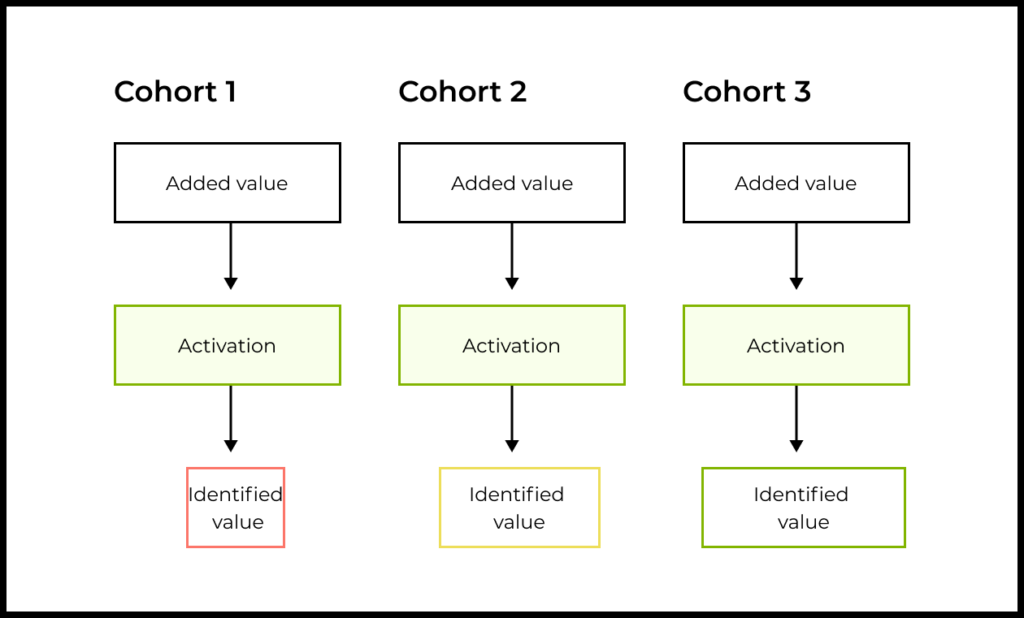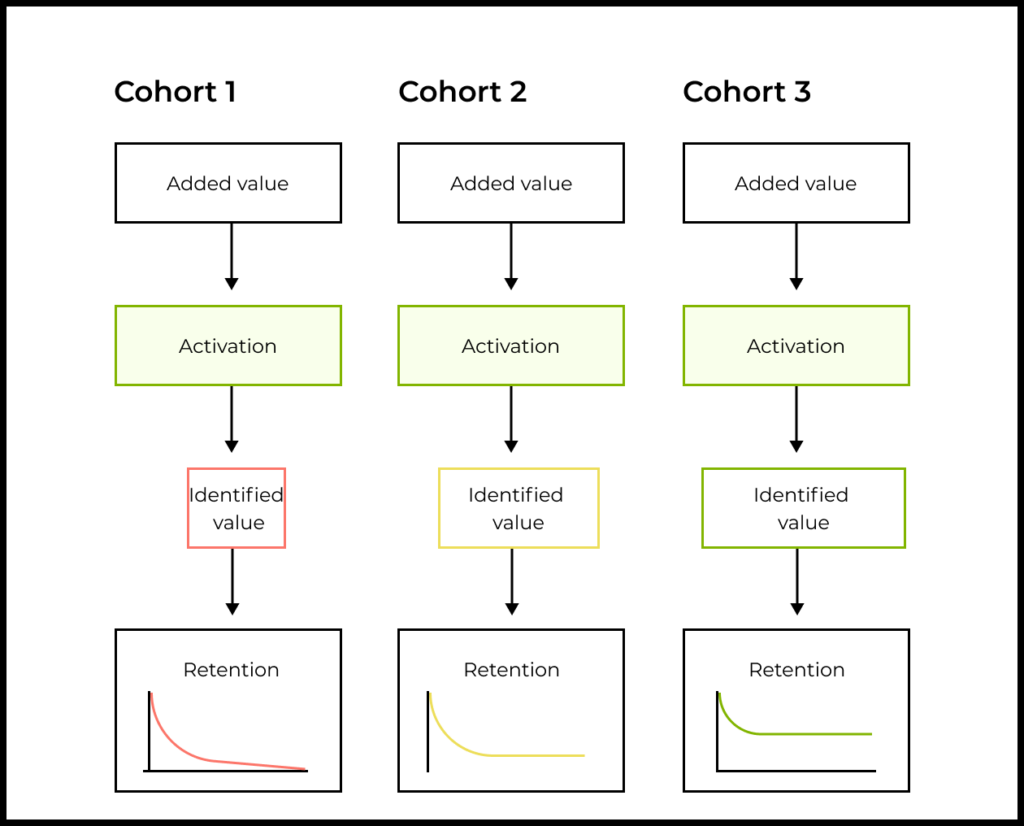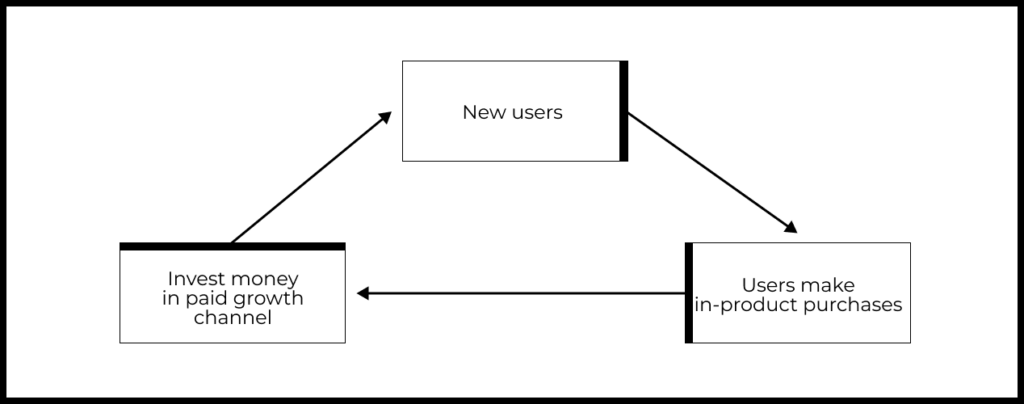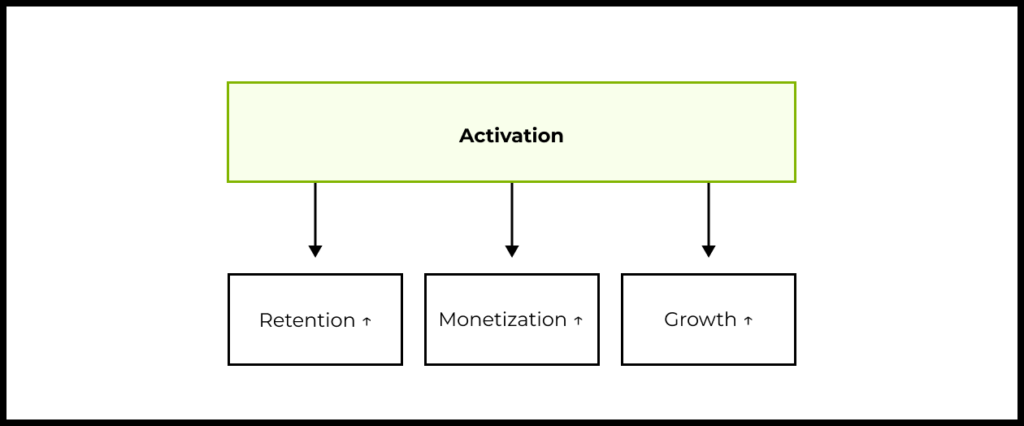This is part of a series of articles on activation and making sure users experience and appreciate your product’s value.
In this article, we will discuss why activation is a key growth lever for products that achieve product/market fit.
→ Test your product management and data skills with this free Growth Skills Assessment Test.
→ Learn data-driven product management in Simulator by GoPractice.
→ Learn growth and realize the maximum potential of your product in Product Growth Simulator.
→ Learn to apply generative AI to create products and automate processes in Generative AI for Product Managers – Mini Simulator.
→ Learn AI/ML through practice by completing four projects around the most common AI problems in AI/ML Simulator for Product Managers.
All posts from the series
01. When user activation matters and you should focus on it.
02. User activation is one of the key levers for product growth.
03. The dos and don’ts of measuring activation.
04. How “aha moment” and the path to it change depending on the use case.
05. How to find “aha moment”: a qualitative plus quantitative approach.
06. How to determine the conditions necessary for the “aha moment”.
07. Time to value: an important lever for user activation growth.
08. How time to value and product complexity shape user activation.
09. Product-level building blocks for designing activation.
10. When and why to add people to the user activation process.
11. Session analysis: an important tool for designing activation.
12. CJM: from first encounter to the “aha moment”.
13. Designing activation in reverse: value first, acquisition channels last.
14. User activation starts long before sign-up.
15. Value windows: finding when users are ready to benefit from your product.
16. Why objective vs. perceived product value matters for activation.
17. Testing user activation fit for diverse use cases.
18. When to invest in optimizing user onboarding and activation.
19. Optimize user activation by reducing friction and strengthening motivation.
20. Reducing friction, strengthening user motivation: onboarding scenarios and solutions.
21. How to improve user activation by obtaining and leveraging additional user data.
Activation touches 100% of new users
100% of new users are exposed to the activation process. No other part of the product is as impactful on how users will perceive your service.
Users come to you believing that your product can make their lives better. They’re willing to spend some time and try to figure out how the product can be useful to them.
You should build activation mechanisms that will allow new users to get to know your product and understand how and in what situations it creates added value for them. All key product metrics will depend on the quality of solving this problem.
Activation is one of the main levers of influence on Retention
We previously discussed that user retention depends on the frequency of the task and the product’s added value in comparison to alternatives.
This is a simplification, since the objective added value of the product doesn’t matter. What is important is the subjective experience of each user, i.e., the value of the product that a particular user perceives.
For example, a vaccine against a disease can theoretically be 100% effective and have no side effects. But whether a particular person uses this vaccine depends on how the person perceives its supposed effectiveness, not its objective metrics. And as we’ve learned over the years, the perception of a vaccine’s effectiveness can be dramatically different from its actual performance.
In this light, activation is a set of mechanisms that convey the objective value of a product to the subjective perception of a particular user.

How exactly does activation affect retention?
Let’s say you’re working on an e-commerce marketplace that has achieved product/market fit in a specific market segment.
- The marketing team has attracted a cohort composed of 70% users from the target market segment and 30% users from adjacent segments where product/market fit has not yet been achieved.
- The current version of onboarding and activation successfully communicates the value of the product to only 50% of users.
In this case, only 35% (that is, 70% * 50%) of the attracted cohort will be able to experience the benefits of the product and start using it regularly. In other words, monthly retention plateaus at 35%.
If the team can improve activation and learn how to deliver product value to 70%, then the retention plateau will already be at 49% (70% * 70%). In other words, there is a significant potential to improve retention without changing the product core and only improving the delivery of the existing value.It is often easier and cheaper to improve key product metrics at the activation level instead of improving the objective effectiveness of a product. This doesn’t mean that working on the efficiency of the core of the product is not important—it means that the team must always prioritize the projects with the maximum ROI.

Improving activation affects the monetization model and user acquisition mechanisms
We found out that activation is one of the key levers of influence on product retention. In turn, retention is an important lever of influence on the monetization model and key mechanisms for attracting users.
How activation and retention affect the effectiveness of the monetization model
Let’s go back to the e-commerce marketplace example. The team was able to increase the efficiency of activation from 50% to 70%. This, in turn, led to an increase in the retention plateau from 35% to 49%.
After this change, an even greater number of users began to understand the value of the product and use it regularly. As a result, we will see not only an increase in retention, but also an increase in the percentage of users making purchases.This will lead to an increase in GMV, revenue, and gross profit from the cohort. As a result, LTV will also grow.

How activation and retention affect acquisition in paid advertising channels
Improved monetization will enable the company to use paid advertising channels more efficiently.
First, the company will recoup the money invested in paid channels faster (due to changes in LTV dynamics). Therefore it will be able to recoup invested money in the channel faster and reinvest it again.
Second, the higher LTV and smaller payback window will enable the company to spend more on customer acquisition. This, in turn, will allow it to win advertising auctions more often and claim a larger share of the paid advertising channels inventory.

How activation and retention affect viral and content growth cycles
If we assume that word of mouth from satisfied customers is an important source of new users in this marketplace, then this growth channel will work much better.
Increasing the effectiveness of delivering value and flattening the retention curve at a higher level will result in more users in the cohort regularly experiencing the value of the marketplace and talking about it with their friends.
If the product had other viral or content growth loops, their efficiency would increase in the same way.
Improvement in activation has a non-linear effect on product growth
An increase in activation efficiency affects the growth model at several levels at once:
- Retention: More users experience the product’s added value and start using it to solve their problems.
- Monetization: As retention and usage grow, the product does more work for users and, as a result, increases the efficiency of the monetization model.
- Growth channels: Both paid advertising channels and viral and content-based user acquisition mechanisms improve as the efficiency of activation increases.
Thus, an increase in activation efficiency translates into a whole set of improvements in key elements of the growth model. It will have a non-linear effect on the overall growth rate of the product.

Why activation is one of the most important levers of influence on product growth
For a product that has achieved product/market fit, activation becomes one of the key growth levers.
First, onboarding and activation is the only part of the product that 100% of users are exposed to. It is exactly where users get their first impression of your product.
Second, it will often be easier and cheaper to improve the efficiency of value delivery than improve the core of the product. Therefore, investing effort and resources in activation work often has a higher ROI.
Third, improving activation has a non-linear effect on product growth. Improving the efficiency of a product’s value delivery allows you to better retain users (i.e., increase retention), better monetize them, and use acquisition channels more efficiently.






